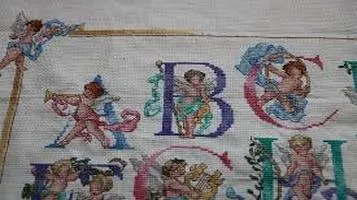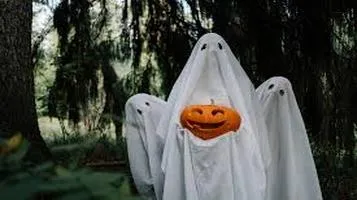Embroidery and Cross-Stitching: An Artful Journey Through Threads and Time
Embroidery and cross-stitching are timeless forms of needlework that involve decorating fabric with intricate designs using thread or yarn. Embroidery encompasses a wide range of techniques and styles, often characterized by its use of a variety of stitches, including satin, chain, and blanket stitches, to create detailed patterns and images. It can be done by hand or machine and is often used to embellish clothing, accessories, and home décor items. Cross-stitching, a subset of embroidery, involves making X-shaped stitches on fabric, typically an even-weave material like Aida cloth. This method is known for its pixelated, grid-like appearance and is popular for creating detailed, colorful patterns and landscapes. Both crafts allow for artistic expression and have a rich cultural heritage across the world.

Embroidery and cross-stitching are two timeless needlecrafts that have captivated artisans and hobbyists for centuries. These intricate fabric arts are not merely acts of decoration but are steeped in cultural heritage, storytelling, and personal expression. As someone who has dabbled in both crafts for years, I can attest to their enduring charm and the profound sense of accomplishment they bring.
Embroidery, in its broadest sense, involves decorating fabric with needle and thread. The possibilities within this realm are nearly limitless, from the delicate elegance of silk ribbon embroidery to the bold, graphic nature of crewel work. Cross-stitching, a subset of embroidery, is characterized by its use of X-shaped stitches to form a picture or pattern. It is often the gateway to the larger world of embroidery due to its structured, grid-based approach, which makes it accessible to beginners.
The allure of embroidery and cross-stitching lies in their versatility and the meditative quality of the work. The rhythmic motion of pulling thread through fabric can be a calming escape from the hustle and bustle of modern life. Each stitch is a small, deliberate act that, over time, builds into something beautiful and meaningful. Whether you are creating a complex piece of art or a simple monogram, the process is a journey of patience and creativity.
One of the most appealing aspects of these crafts is their accessibility. You don't need a lot of expensive equipment to get started. Basic materials include fabric, needles, and thread—though the variety of each can be overwhelming. Fabrics range from the loose weave of Aida cloth, ideal for cross-stitching, to the tightly woven linen preferred for more delicate embroidery. Threads come in a dazzling array of colors and types, from the sturdy cotton floss most commonly used in cross-stitching to the luxurious sheen of silk threads.
Patterns and designs for embroidery and cross-stitching are as varied as the artisans who create them. Traditional motifs often reflect the cultural heritage from which they originate. For example, Japanese sashiko embroidery features geometric patterns in white thread on indigo fabric, while Eastern European cross-stitch patterns are rich with symbols and vibrant colors. Modern designs, on the other hand, range from minimalist abstractions to detailed portraits, allowing contemporary crafters to push the boundaries of these ancient arts.
As with any craft, the quality of your materials can significantly impact your work. Investing in good-quality fabric and thread can make a noticeable difference in the final product. Superior fabric holds stitches better and lasts longer, while high-quality thread resists fraying and fading. That being said, one of the joys of embroidery and cross-stitching is that even the most basic materials can yield stunning results with the right amount of skill and creativity.
Embroidery and cross-stitching also offer a unique way to connect with history and tradition. Many patterns are passed down through generations, and working on these designs can feel like participating in a living history. There's something profoundly satisfying about knowing that you're practicing a craft that has been cherished for centuries. Moreover, these needle arts often serve as a form of storytelling, capturing personal and communal narratives in a way that words alone cannot.
The community aspect of embroidery and cross-stitching should not be underestimated. Online forums, social media groups, and local craft clubs provide valuable resources and support for both beginners and experienced artisans. These communities are treasure troves of tips, tutorials, and inspiration, and they offer a sense of camaraderie that can make the solitary act of stitching feel more connected.
Educational resources for embroidery and cross-stitching are abundant. From books and online courses to workshops and tutorials, there is a wealth of information available for those looking to hone their skills. Many crafters find it helpful to start with kits that include all the necessary materials and instructions, gradually moving on to more complex projects as their confidence grows.
One of the most rewarding aspects of embroidery and cross-stitching is the tangible sense of accomplishment that comes with completing a project. Each finished piece is a testament to your patience, skill, and creativity. Whether you frame your work, turn it into a cushion cover, or gift it to a loved one, the result is a unique, handmade item that carries a piece of your heart.
In conclusion, embroidery and cross-stitching are much more than mere hobbies—they are art forms that offer a deep sense of fulfillment and connection. They allow us to slow down and appreciate the beauty of handcrafted work in an increasingly digital world. Through the simple act of stitching, we can express ourselves, preserve traditions, and create something truly beautiful. Whether you're a seasoned artisan or a curious beginner, the world of embroidery and cross-stitching welcomes you with open arms and endless possibilities.






